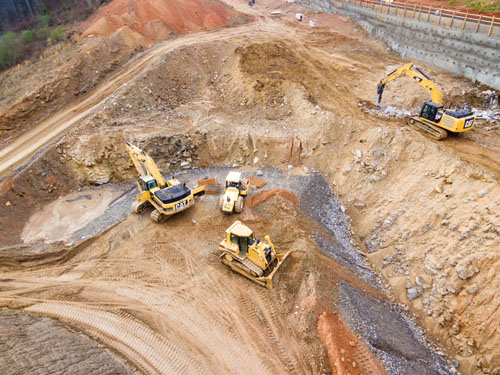The greening of civil engineering
 Climate change, pollution-related illnesses, and energy costs have prompted engineers and architects to innovate and evolve. Times have changed. New residential and commercial buildings and renovations are designed to be more environmentally friendly, thereby reducing emissions, illnesses, and energy consumption. This is the trend no matter where you look in the world. Using sustainable practices is a hot trend in renovation and new building development, one that was developed more than 50 years ago when most builders and designers gave the idea little thought. Today, if you aren’t designing and building sustainably, you’re missing out.
Climate change, pollution-related illnesses, and energy costs have prompted engineers and architects to innovate and evolve. Times have changed. New residential and commercial buildings and renovations are designed to be more environmentally friendly, thereby reducing emissions, illnesses, and energy consumption. This is the trend no matter where you look in the world. Using sustainable practices is a hot trend in renovation and new building development, one that was developed more than 50 years ago when most builders and designers gave the idea little thought. Today, if you aren’t designing and building sustainably, you’re missing out.
We’re proud to support sustainable development here at McNeil Engineering. We understand that environmental solutions that safeguard our planet for future generations have always been at the forefront of new projects. But what other steps can the civil engineering sector take to support sustainable engineering efforts further?
It’s time to go sustainable
Many businesses, specifically those within the construction and civil engineering industries, are under pressure to implement more sustainable practices. Governments worldwide have challenged companies to become net carbon neutral by – at the minimum – 2050. The Environmental Protection Agency wants to reach this target and meet the goal of net zero by 2030. Will states meet it?
Environmental concerns have pushed some companies to identify greener, or environmentally safer, manufacturing, shipping and design options. And we support these efforts. Green engineering is a concept that focuses on minimizing a company’s environmental impact and streamlining its operations. In many cases, these efforts yield productivity benefits in the long run.
Understanding green engineering may help you or your employer decide to use this design method for your needs, no matter what kind of project you’re working on. What is green engineering and what are its core principles? We’ll provide some green engineering benefits and include several examples discussing green engineering in the workplace.
What is green engineering?
Green engineering utilizes engineering processes and methods that minimize pollution, improve a business’ sustainability, and decrease the potential for health issues caused by unsafe manufacturing and design methods. It is incumbent on manufacturers and engineering firms to conduct proper due diligence and operate only to the highest environmental standards. But how can individual engineers do this?
Well, for one, engineers can do this by nothing more than improving existing processes. Successful green engineering examines sustainability issues, such as fossil fuel use, measures a product or service’s life cycle, identifies potential waste concerns, and decreases the likelihood of these problems occurring with innovative concepts. Engineers understand how to evaluate these concepts and make design decisions based on them. There are specific aspects of green engineering to consider:
1. Waste Management and Reduction
Modern commercial manufacturing processes have a problem. They’re dirty. Many commercial processes, such as manufacturing and shipping products, may waste energy through inefficient manufacturing and delivery methods. The question underlying sustainable engineering is how to eliminate this waste. What kind of new production methods can be introduced or innovated to reduce waste?
2. Pollution Management and Reduction
It may seem simplistic to ask why pollution is a problem. We all know that pollution is a problem at every level of society. Pollution prevention focuses on identifying a company’s pollution sources and minimizing the waste it produces. Engineers may identify why pollution occurs, find processing methods that decrease its spread, integrate newer and cleaner techniques, and enhance manufacturing and delivery cleanliness. Civil and structural engineers play an important role in this process.
3. Product Optimization and Enhancement
Guess what sustainable engineering firms focus on? Sustainable engineering firms try to find ways to improve the products or services they’re engineering while making them safer for the environment. This is generally a multi-pronged effort. This process may include finding alternate energy sources that work better than traditional options or identifying greener and more efficient manufacturing materials and methods. Engineers must operate within this mindset to find the most sustainable or “green” solutions to a particular engineering problem.
4. Materials Efficiency and Management
What does materials efficiency and materials management mean? Essentially, materials management entails finding better and safer materials for diverse engineering purposes. Finding more advanced materials is especially important in the product design and manufacturing phase. Engineers may identify new and safer materials or invent options to integrate into their plans and find better and more efficient production methods. When engineers innovate, we all win.
We support sustainable engineering methods here at McNeil Engineering. Our engineers understand the importance of sustainability in our profession. Contact us today to learn more.
